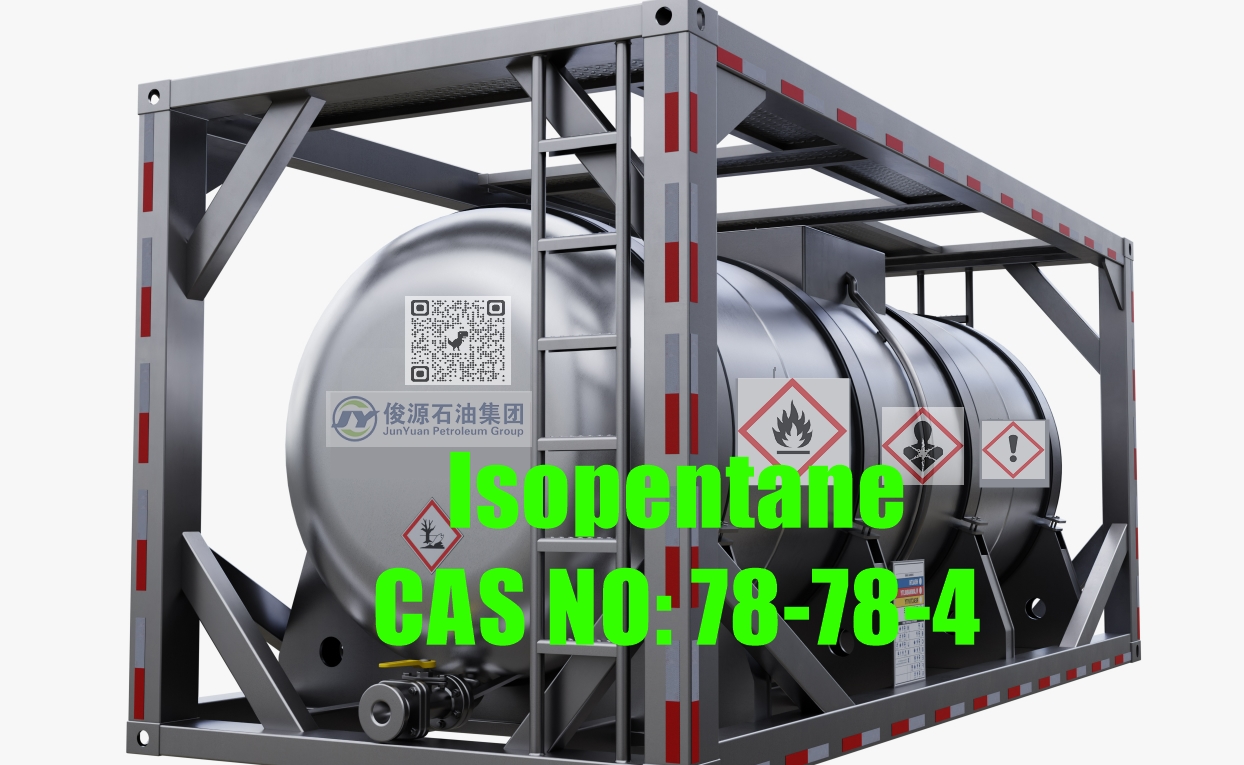Isopentane is a pentane isomer. Isopentane, C5H12, also called methylbutane or 2-methylbutane, is a branched-chain alkane with five carbon atoms. Isopentane is an extremely volatile and flammable liquid at room temperature and pressure. The normal boiling point is just a few degrees above room temperature. It is a colorless and odorless liquid. Isopentane can be mixed with n-pentane to make EPS and it also can be mixed with cyclopentane as a foaming agent for rigid urethane foam. It is also used to produce toothpastes and cosmetics. As an anesthetic, isopentane is less potent than the shorter-chain alkanes; however, it appears more active metabolically.
Chemical name: iso-Pentane Chemical synonyms: Isopentane Product Brand: Chromasolv Material form: Solvent Density (g/cm3): 0.62 Flash Point (°C): -51 °C Molecular weight: 72.15 Molecular formula: C5H12 Chemical purity: =99.5% UN Number: UN 1265
- Isopentane Liquid Density: 27.5 scf/ Gallon
- Isopentane Vapor Pressure:
- Isopentane Packaging:
- Isopentane Fill Density: 56%
Key Specification Table
| CAS # |
EC Number |
Hill Formula |
Chemical Formula |
Molar Mass |
| 78-78-4 |
201-142-8 |
C₅H₁₂ |
C5H12 |
72.15 g/mol |
Pricing & Availability
| Catalogue Number |
Availability |
Packaging |
Qty/Pack |
Incoterms |
Payment Terms
|
Remarks
|
| JPG65980 |
- Limited Availability
|
ISO Tank
|
14.7 MT
|
EXW, FOB, CFR, CIF, FCA
|
T/T, LC
|
|
Iso-Pentane is the first branched, liquid hydrocarbon or paraffin. This group of substances is also called alkanes. The iso-Pentane has a chemical formula of C5H12
Iso-Pentane is almost insoluble in water, but shows very good solubility or unlimited miscibility with many organic solvents such as other paraffins, ethers, esters, aromatics or chlorinated hydrocarbons.
Cosmetics & Personal care
Insulation Industry
Polymer Industry
Cooling Industry
Chemicals Industry
Fine Chemistry
Appliance Industry

Application
Like all alkanes (paraffins, saturated hydrocarbons), iso-Pentane is a very good solvent for non-polar substances such
as lubricating greases. However, its boiling point of 29 °C is very close to room temperature, so it is usually used
elsewhere.
Very pure, aromatics-free iso-Pentane is used in shaving gel or shower gel, as it already evaporates due to body
temperature, making the products foam up very finely and creamily.
Due to increasingly strict rules to protect the ozone layer and stop global warming, iso-Pentane is an ideal substitute
for chlorinated and fluorinated hydrocarbons for foaming polystyrene or polyurethane.
Cyclopentane is very often used in combination with different proportions of iso-Pentane to produce Polyurethane
(PU) foam. The Cyclopentane has a better insulating effect, the iso-Pentane evaporates more easily and contributes to
the optimal formation of the cell structure.
Geothermal plants are a significant contribution to renewable energy supply. In this process, heat is extracted from
the ground and converted into heating energy for buildings in a heat pump. iso-Pentane can be used as the process
medium in such heat pumps.
Shaving foam and shower gel
Non-polar solvent with very high volatility
Working medium in geothermal plants
Blowing agent for polystyrene and polyurethane foam
Building insulation
Process medium for polyethylene (PE, LLDPE) and polypropylene (PP)
The most widely produced plastic in the world is Polyethylene (PE). Modern plants polymerize the ethylene in the
gas phase. This must be cooled after the reaction so that the dust-fine plastic beads become solid and do not stick
to the equipment. iso-Pentane is injected in liquid form into the gas stream. It evaporates and thus cools the
reaction. The iso-Pentane can then be condensed and reused. It can also be used as a process medium for
Polypropylene (PP), which is produced in the same way in the gas phase
Polystyrene is a synthetic polymer made from monomers of the aromatic hydrocarbon styrene. Polystyrene can be solid or foamed. General-purpose polystyrene is clear, hard, and brittle. It is an inexpensive resin per unit weight. It is a poor barrier to oxygen and water vapour and has a relatively low melting point. Polystyrene is one of the most widely used plastics, the scale of its production being several million tonnes per year. Polystyrene can be naturally transparent, but can be colored with colorants. Uses include protective packaging, containers, lids, bottles, trays, tumblers, disposable cutlery, in the making of models, and as an alternative material for phonograph records..